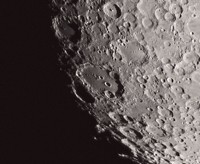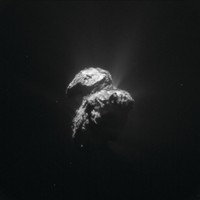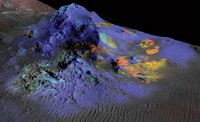Advertisement
Grab your lab coat. Let's get started
Welcome!
Welcome!
Create an account below to get 6 C&EN articles per month, receive newsletters and more - all free.
It seems this is your first time logging in online. Please enter the following information to continue.
As an ACS member you automatically get access to this site. All we need is few more details to create your reading experience.
Not you? Sign in with a different account.
Not you? Sign in with a different account.
ERROR 1
ERROR 1
ERROR 2
ERROR 2
ERROR 2
ERROR 2
ERROR 2
Password and Confirm password must match.
If you have an ACS member number, please enter it here so we can link this account to your membership. (optional)
ERROR 2
ACS values your privacy. By submitting your information, you are gaining access to C&EN and subscribing to our weekly newsletter. We use the information you provide to make your reading experience better, and we will never sell your data to third party members.
Astrochemistry
Asteroid Ryugu is dark and dry
New results suggest a unique celestial object
by Sam Lemonick
March 21, 2019
| A version of this story appeared in
Volume 97, Issue 12

Spectroscopic analysis by the Japanese spacecraft Hayabusa2 reveals that the asteroid 162173 Ryugu is unusually dark in color and has little water, though there’s evidence that its rocks were once wet (Science 2019, DOI: 10.1126/science.aav7432).These were the first observations of Ryugu in the 1.8–3.2 µm range, where OH stretching and H2O bending modes are visible.
Diamond-shaped and a kilometer across, Ryugu orbits the sun mostly between Earth and Mars and is thought to contain materials left from the early solar system. Hayabusa2 measurements show that it is quite dark, reflecting less than 2% of light at 2.0 µm. The new results confirm that, as was previously suggested, the asteroid is rich with carbonaceous minerals. According to the researchers, a weak but consistent 2.72 µm signal points to a homogeneous composition that includes magnesium minerals thought to derive from hydrated clays. But the group saw no evidence of water ice or water-containing minerals.
Study coauthor Ralph E. Milliken of Brown University said in a press conference that the group hasn’t matched Ryugu with any other space objects quite like it. The asteroid is most similar to previously studied celestial bodies that were once wet and then were heated to the point that the water was lost. Ryugu may have formed from the debris of a collision, which could have darkened, dehydrated, and dehydroxylated the rocks. But these results apply only to Ryugu’s surface, and Milliken said other Hayabusa2 experiments that will excavate and capture subsurface rocks could reveal something new.





Join the conversation
Contact the reporter
Submit a Letter to the Editor for publication
Engage with us on Twitter